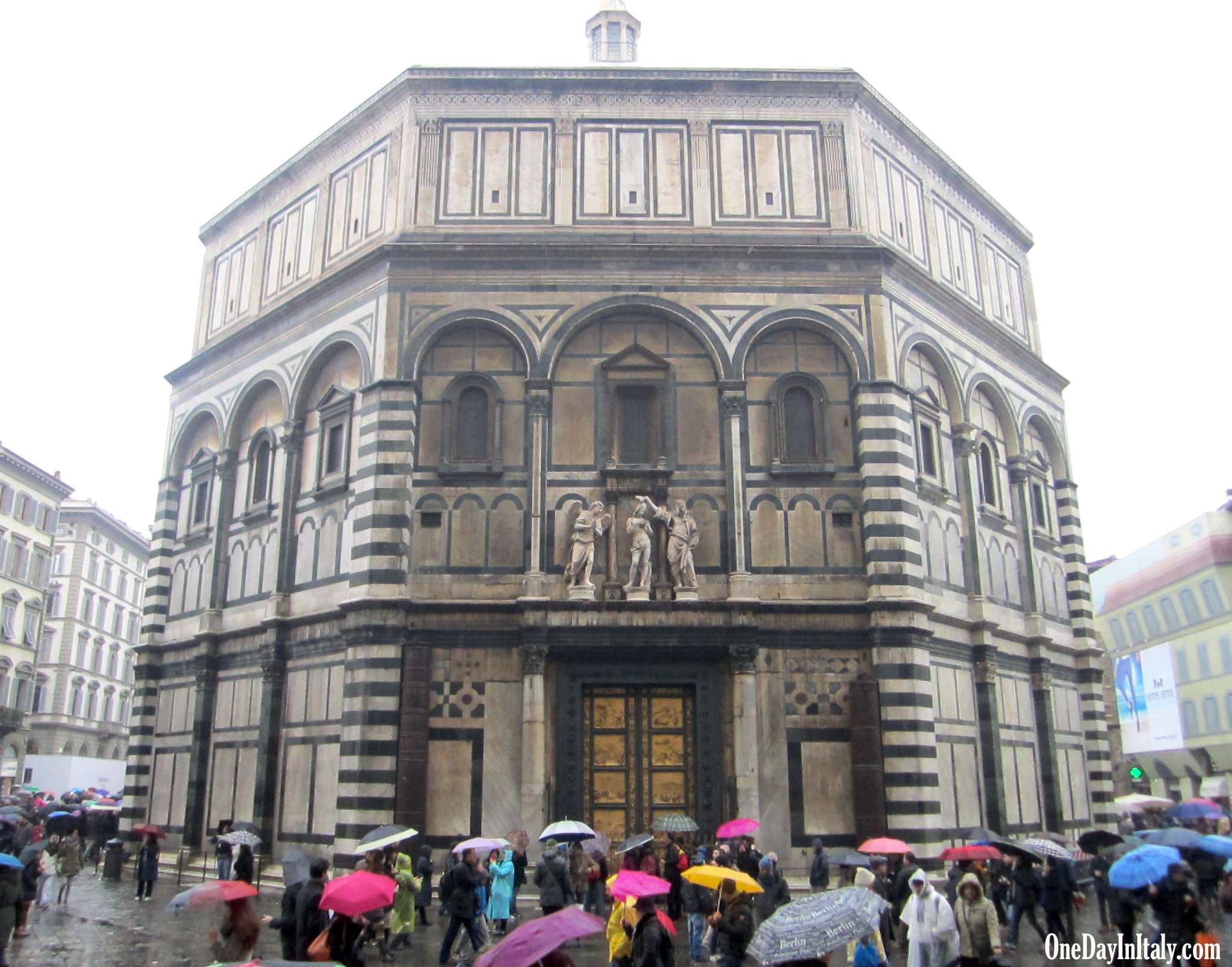
One of the most famous free attractions in Florence are the bronze doors on the Baptistery of San Giovanni that Michelangelo called the “Gates of Paradise”, a classifier that has stuck in the minds of Florentines and foreign admirers for centuries. Lorenzo Ghiberti, a contemporary and rival of Filippo Brunelleschi (the artist and architect famous for designing the incredible dome on Florence’s duomo - read more here), created these marvels between 1425 and 1452.
That’s right – it took him and his team of artisans 27 years to sculpt and cast the two doors, which feature ten panels depicting scenes from the Old Testament. A quarter century earlier, in 1401, Ghiberti had gotten his first commission to create bronze doors for the Baptistery. Those doors featured twenty-eight panels in total: twenty showing scenes from the New Testament and eight portraying the four evangelists and the Church Fathers. After 21 years of work, they were finally installed on the east side of the structure, facing the duomo, only to be shifted to the north side when the “Gates of Paradise” were completed. The east side, facing the duomo, is considered the most prestigious location.
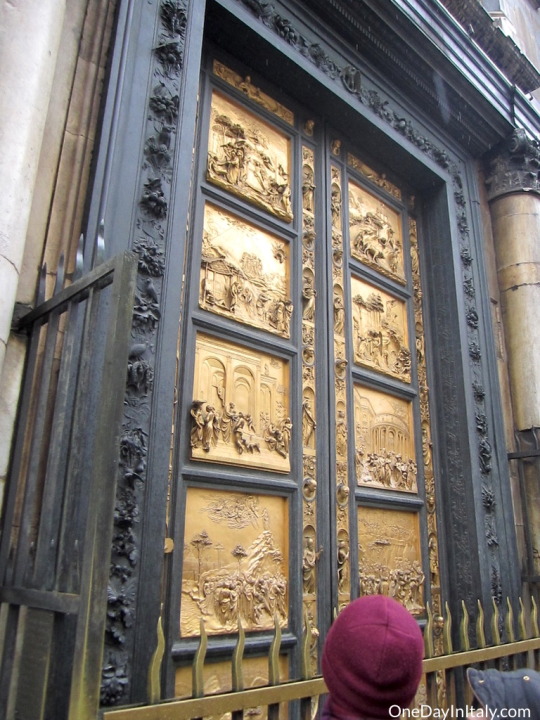
The images on the panels were revolutionary for their time. They employed an incredible sense of perspective, something only beginning to be experimented with in the 15th century. Many of the figures were almost 3D, standing out completely from the doors and attached by only a small, delicate area, a huge feat particularly since the doors were cast in one single, 3-ton bronze piece. In fact, no one else had been able to cast such a large piece since the times of the Roman Empire. Ghiberti even etched in cracks in the walls of Jericho, which would normally be one of a bronze artists’s worst fears.
In addition to these notables, Ghiberti used a new method of storytelling in the way he portrayed successive events within the same panel. For example, in the panel of Isaac that tells the story of Jacob and Esau, there are women anticipating the birth of Jacob and Esau in the foreground and Rebecca can be seen in labor in the middle ground. Then, also in the foreground but taking place years later, Ghiberti placed both a scene in which Isaac is sending Esau out on the hunt and a scene in which Jacob is receiving Isaac’s blessing with Rebecca standing nearby. Then, in the background, Esau is depicted during the hunt and Rebecca is standing on the roof listening to God’s warning about the upcoming conflict between her two sons.
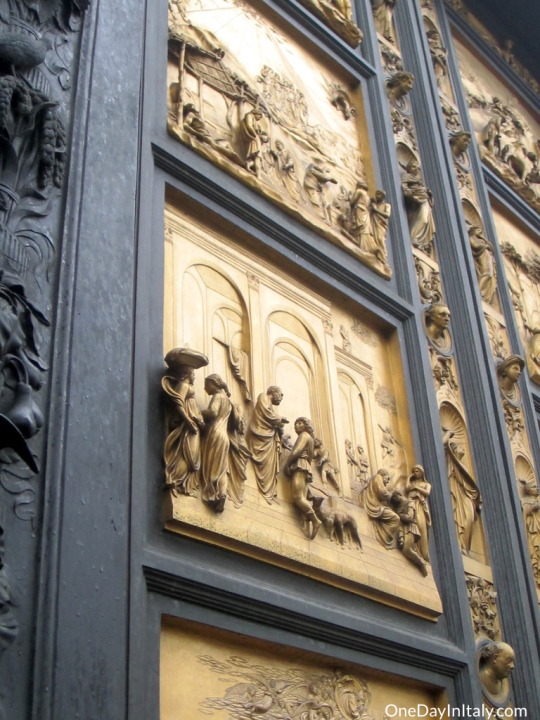
At the bottom right corner of the panel of Isaac (the top right corner of the panel of Moses delivering the commandments at the bottom of the mountain), Ghiberti carved a self-portrait in the form of a bust, a balding man with a slightly smug, self-satisfied tilt to his mouth. And self-satisfied he had a right to be, I suppose!
Ghiberti isn’t the only bust, though. All in all there are 24 busts and 24 figures in the borders surrounding the panels.
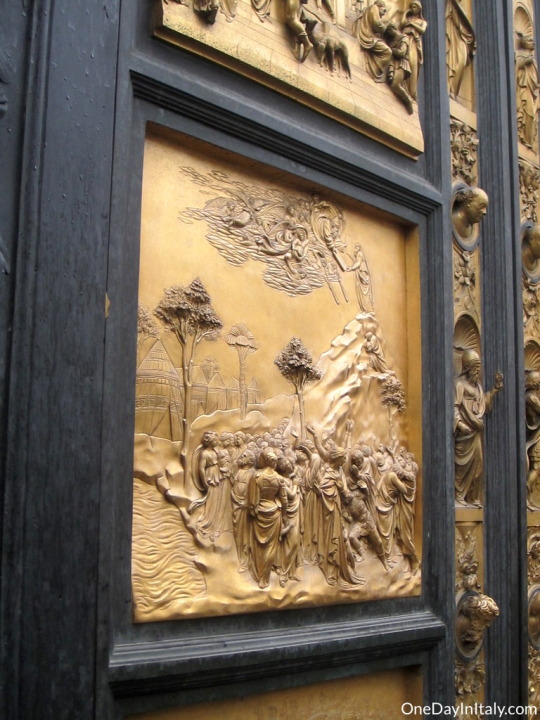
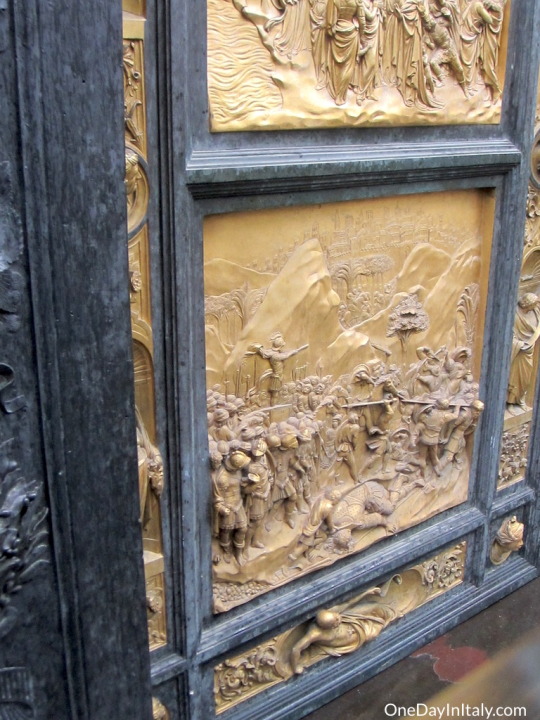
In 1990 Ghiberti’s original work was removed from the Baptistery and replicas were put in their place. Over the centuries the doors had suffered from flood, vandalism, overzealous polishing and harmful levels of air pollution. They had become dull and grimy. Even worse, after the doors were taken down and examined it was discovered that changing levels of humidity had been causing unstable oxides in the bronze beneath the gilding to dissolve and recrystallize, forming tiny indentations and bumps on the surface of the gold.
Now, as experts in Florence are slowly and carefully restoring the doors to preserve them for generations to come, interested visitors can view them in the Museo dell’Opera (which has been closed for a while but is supposed to reopen in November 2015). The replicas still gather crowds on the east side of the Baptistery of San Giovanni, though. Rain or shine admirers patiently wait their turn to approach the shining panels and admire the work of one of Florence’s great masters.
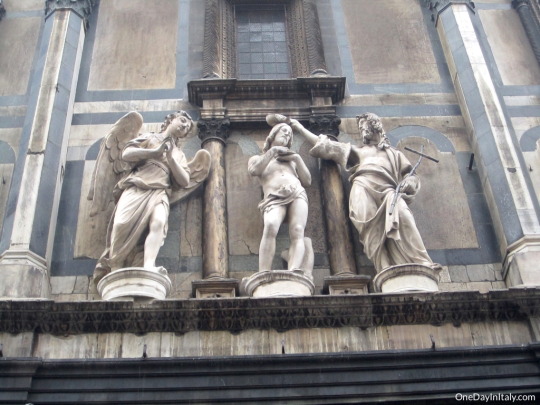
Comments
comments











Leave a Reply